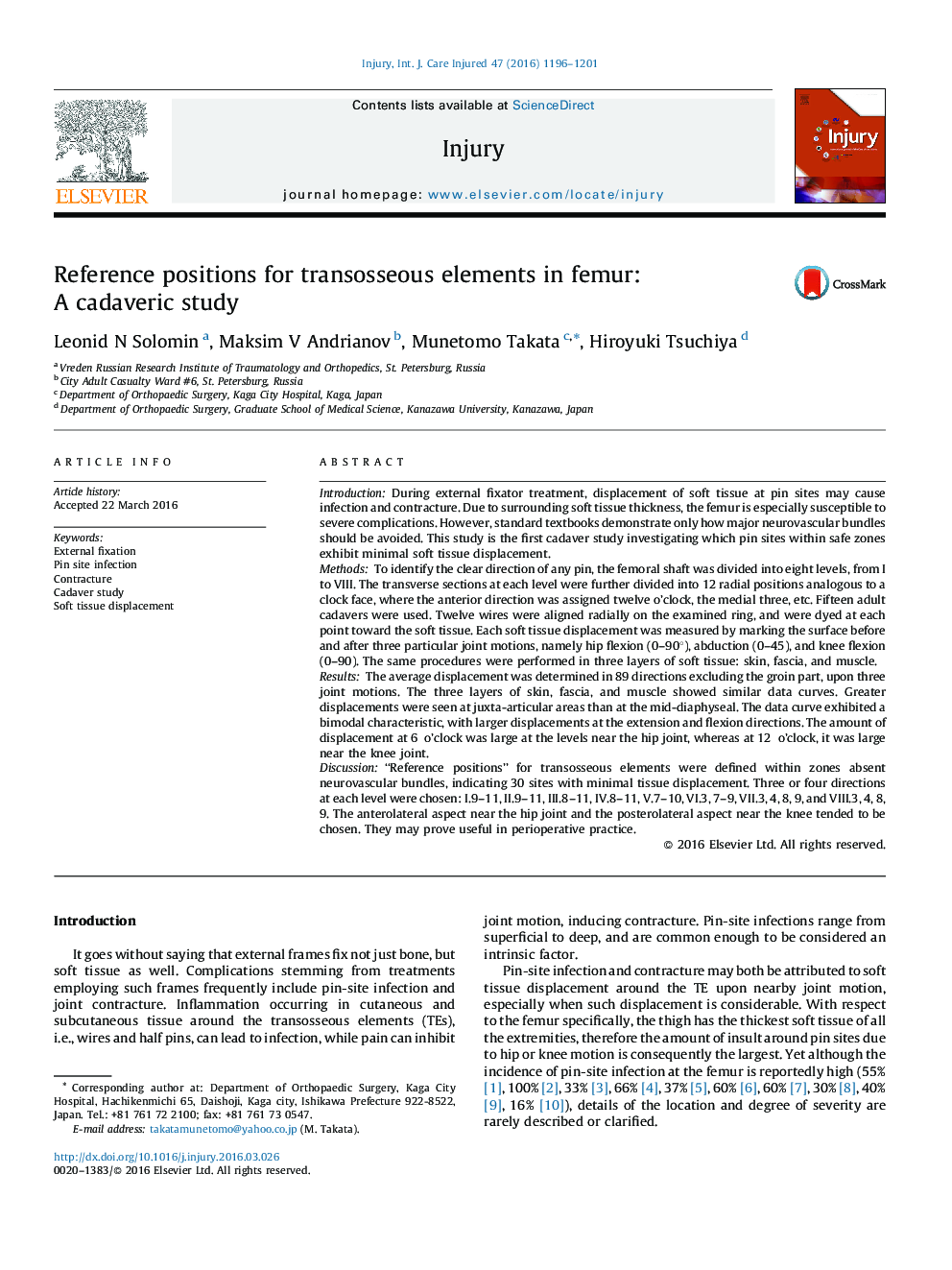| کد مقاله | کد نشریه | سال انتشار | مقاله انگلیسی | نسخه تمام متن |
|---|---|---|---|---|
| 3238832 | 1205975 | 2016 | 6 صفحه PDF | دانلود رایگان |

IntroductionDuring external fixator treatment, displacement of soft tissue at pin sites may cause infection and contracture. Due to surrounding soft tissue thickness, the femur is especially susceptible to severe complications. However, standard textbooks demonstrate only how major neurovascular bundles should be avoided. This study is the first cadaver study investigating which pin sites within safe zones exhibit minimal soft tissue displacement.MethodsTo identify the clear direction of any pin, the femoral shaft was divided into eight levels, from I to VIII. The transverse sections at each level were further divided into 12 radial positions analogous to a clock face, where the anterior direction was assigned twelve o’clock, the medial three, etc. Fifteen adult cadavers were used. Twelve wires were aligned radially on the examined ring, and were dyed at each point toward the soft tissue. Each soft tissue displacement was measured by marking the surface before and after three particular joint motions, namely hip flexion (0–90°), abduction (0–45), and knee flexion (0–90). The same procedures were performed in three layers of soft tissue: skin, fascia, and muscle.ResultsThe average displacement was determined in 89 directions excluding the groin part, upon three joint motions. The three layers of skin, fascia, and muscle showed similar data curves. Greater displacements were seen at juxta-articular areas than at the mid-diaphyseal. The data curve exhibited a bimodal characteristic, with larger displacements at the extension and flexion directions. The amount of displacement at 6 o’clock was large at the levels near the hip joint, whereas at 12 o’clock, it was large near the knee joint.Discussion“Reference positions” for transosseous elements were defined within zones absent neurovascular bundles, indicating 30 sites with minimal tissue displacement. Three or four directions at each level were chosen: I.9–11, II.9–11, III.8–11, IV.8–11, V.7–10, VI.3, 7–9, VII.3, 4, 8, 9, and VIII.3, 4, 8, 9. The anterolateral aspect near the hip joint and the posterolateral aspect near the knee tended to be chosen. They may prove useful in perioperative practice.
Journal: Injury - Volume 47, Issue 6, June 2016, Pages 1196–1201